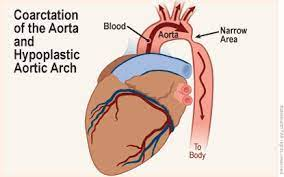A 2-month-old patient has a history of phimosis What statement by the father indicates a need for further teaching?
This is a normal finding as my son is uncircumcised
This means that there is a narrowing of his torch could lead to an infection"
I will make sure to pull his foreskin back to clean it every week
If this continues to be an issue, we may have hi have him circumcised
The Correct Answer is C
Phimosis is a condition in which the foreskin of the penis is tight or difficult to retract over the glans (head of the penis). It is normal for infants and young boys to have a non-retractable foreskin, and it usually resolves naturally as they grow. Pulling back the foreskin forcefully or attempting to clean under it in an infant can cause injury, pain, and even infection.
The correct approach is to gently clean the external genitalia with mild soap and water, but the foreskin should not be forcibly retracted in an infant. The foreskin will gradually become more retractable on its own as the child grows.
The other statements are generally appropriate:
A. "This is a normal finding as my son is uncircumcised": Phimosis is more common in uncircumcised males, and it is often a normal developmental variation in infants.
B. "This means that there is a narrowing of his torch that could lead to an infection": This statement recognizes the possibility of complications related to phimosis, such as the risk of infection, which is accurate.
D. "If this continues to be an issue, we may have him circumcised": Circumcision may be considered in cases where phimosis persists and causes problems, but it is usually not recommended during infancy unless medically necessary. This statement acknowledges a potential treatment option.
Nursing Test Bank
Naxlex Comprehensive Predictor Exams
Related Questions
Correct Answer is B
Explanation
Coarctation of the aorta is a congenital heart defect where the aorta, the major blood vessel that carries oxygenated blood from the heart to the body, is narrowed. As a result, blood pressure tends to be higher in the arms and upper body but lower in the lower body, including the legs. This condition can lead to symptoms such as dizziness, headaches, and even nosebleeds due to high blood pressure. Weak or absent lower extremity pulses, as well as pale and cool legs, are characteristic physical findings in coarctation of the aorta.
A. Tetralogy of Fallot: This is a different congenital heart defect characterized by a combination of four specific heart defects, including ventricular septal defect, right ventricular hypertrophy, pulmonary stenosis, and an overriding aorta. It typically does not cause the symptoms described in the scenario.
C. Pulmonic Stenosis: This condition involves the narrowing of the pulmonary valve or artery, leading to restricted blood flow from the right ventricle to the pulmonary artery. While it can cause various symptoms, it typically doesn't cause the specific blood pressure discrepancies described.
D. Tricuspid Atresia: This is a congenital heart defect where the tricuspid valve is absent or abnormally developed. It leads to the mixing of oxygenated and deoxygenated blood in the heart. While it can cause cyanosis (bluish skin due to low oxygen levels), it doesn't typically cause the specific blood pressure findings mentioned.

Correct Answer is D
Explanation
Weight loss in a child with acute glomerulonephritis is often due to a reduction in edema (fluid retention and swelling). Acute glomerulonephritis can lead to significant edema, as the kidneys may not effectively filter excess fluid and waste products from the body. During hospitalization and treatment, interventions such as diuretics and improved kidney function may result in the gradual removal of excess fluid, leading to a decrease in edema and overall body weight.
The other options are less likely to be the primary cause of the weight loss:
A. Poor appetite: While acute glomerulonephritis can affect appetite, especially due to nausea or other symptoms, it is not typically the primary reason for significant weight loss over a short period.
B. Restriction to bed rest: While being on bed rest can lead to muscle atrophy and loss of lean body mass over an extended period, it is unlikely to result in an 8-pound weight loss in just 4 days unless there are additional factors at play.
C. Increased potassium intake: Increased potassium intake alone would not be a primary cause of significant weight loss. High potassium levels in the blood (hyperkalemia) can occur in kidney disease, but it is not typically associated with rapid weight loss.
Whether you are a student looking to ace your exams or a practicing nurse seeking to enhance your expertise , our nursing education contents will empower you with the confidence and competence to make a difference in the lives of patients and become a respected leader in the healthcare field.
Visit Naxlex, invest in your future and unlock endless possibilities with our unparalleled nursing education contents today
Report Wrong Answer on the Current Question
Do you disagree with the answer? If yes, what is your expected answer? Explain.
Kindly be descriptive with the issue you are facing.
